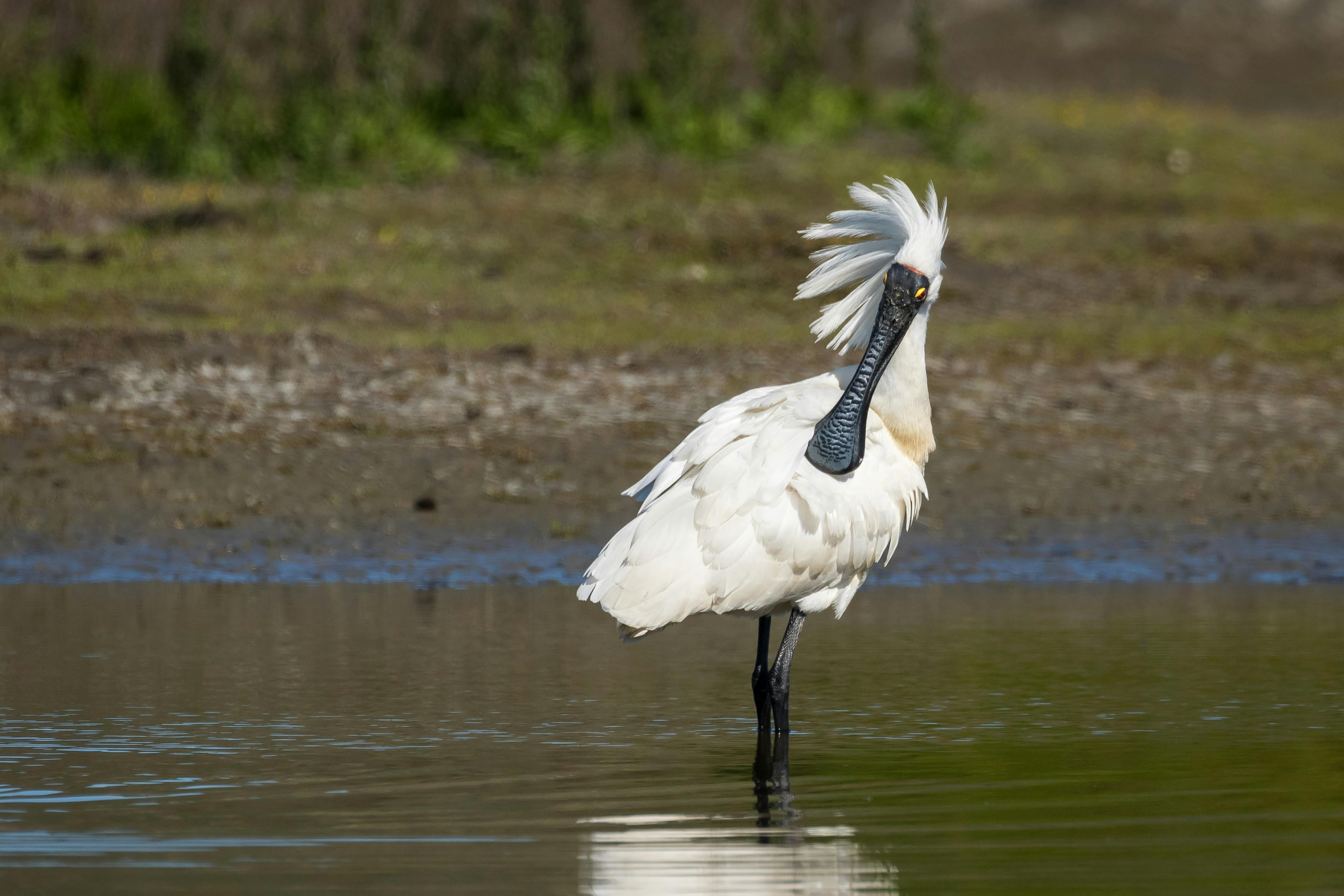The royal spoonbill, kotuku ngutupapa, first flew over from Australia in 1861, making it a ‘native’ bird. For the next 90-odd years the birds remained vagrant visitors to New Zealand. But, in 1949, the first recorded breeding was observed right next to the white heron colony at Okarito in South Westland.
Conservation status
A native species classed as naturally uncommon.
Features
The royal spoonbill can be described as a large, fairly heavy, long-legged bird with white plumage. They are similar in profile to the white heron (kotuku) but for two distinguishing features: although smaller, the spoonbill is much bulkier and weighs up to 2kg. The second readily identifiable difference is the shape of the bill. As the name suggests, it possesses a very distinct and long black bill that ends in a spoon shape. During the breeding season, both sexes grow long white crest feathers on the back of the head with male feathers reaching up to 20cm.
Diet
The royal spoonbill has a unique style of foraging. It feeds while wading in water, repeatedly scything its submerged spoon-shaped bill in an arc in search of prey. It eats mainly fish in freshwater and shrimps in estuarine tidal flats but will also devour other crustaceans, aquatic insects and frogs.
Another interesting feature of the spoonbill is the vibration detectors inside the bill which can detect prey in murky water or darkness, allowing the birds to feed at night.
Tips birdspotting
Outside the breeding season, spoonbills can be found in almost any coastal or estuarine habitat. Being large and white, they tend to stand out so are not that difficult to find. They can be approached quite easily by taking advantage of their feeding habits. Spoonbills get very focused when foraging and are often not taking much notice of their surroundings.
Nesting
To kick the breeding season off (in October) mixed groups of unpaired birds gather at breeding sites to form ‘bachelor parties’ and begin displaying to each other.Courtship then ensues and involves circular or figure-of-eight flight displays with exaggerated flight noise, bowing while clapping bills, quivering their heads and raising and lowering crest plumes.
Nests are bowl-shaped and lined with leaves and other vegetation, usually placed in the crown of a tree that overhangs water. Up to four dull white eggs are laid (between November and February) and take around 20 to 25 days to hatch. Both parents share incubation and feeding duties. Once fledged, young birds forage alongside parents for some time before the family group disperses to wintering sites elsewhere.
Feathery fact
Our royal spoonbill is one of six spoonbill species worldwide but the only one that breeds in New Zealand. Surprisingly, it is most closely related to the ibises, not the herons.








